Cherry-Headed (Red-Masked) Conure: Bird Species Profile
The cherry-headed conure, also known as the red-masked conure, is a medium-sized parrot that is very intelligent and loveable and known for showing off its clownish antics. Easy to train, the cherry-headed conure is one of the most talkative birds among the conure species. It also tends to be a loud bird that isn't suitable for apartment dwellers.
Species Overview
Common Names: Cherry-headed conure, red-headed conure, red-masked conure, and red-masked parakeet
Scientific Name: Aratinga erythrogenys
Adult Size: 11 to 13 inches
Life Expectancy: 50 years or more
Origin and History
The cherry-headed conure is native to South America, where it occupies a relatively narrow range from southwestern Ecuador to northwestern Peru. This species dwells primarily in jungles and deciduous forests but can also do well in semiarid regions and even suburban zones.
In several places, pet birds released or escaped into the wild have established feral breeding populations. The movie "The Wild Parrots of Telegraph Hill" popularized a group of feral cherry-headed conures in San Francisco. Other feral populations exist in other parts of California, Texas, and Florida.
The cherry-headed conure is a very popular pet; in 1994, it was classified as "near-threatened" for extinction by the International Union for Conservation of Nature. This status is due to its habitat loss and trapping by the illegal pet trade.
Temperament
Cherry-headed conures are known to be intelligent, fun-loving birds that thrive on interaction with their owners and do well with training. These birds can be playful, affectionate, and entertaining. Cherry-headed conures love being the center of attention and will go to great lengths to get it.
Like all conures, these are very loud birds that scream intermittently. Despite not being a proficient talker, this bird will charm you with its playful personality and comical antics.
The cherry-headed conure, like most parrots, is a flock-oriented bird with well-developed social instincts. In a captive environment, the human owner assumes the role of a flock mate. For a cherry-headed conure to be content, it will require lots of interaction time with its owner. Properly socialized pet conures love spending time with (and on) their owners. They enjoy learning tricks and other training.
Cherry-headed conures need 2 to 4 hours of exercise and playtime with their owners each day. With its attention needs met, you likely will be rewarded with an exciting and interactive pet that never seems to run out of energy and spunk. A happy and healthy cherry-headed conure is always the life of the party.
Speech and Vocalizations
As a group, conures are not fluent talkers like other, more articulate parrots. However, the cherry-headed is one of the most talkative of the conures. It can learn a limited vocabulary. Even a non-talking cherry-headed conure will be extremely chatty with its instinctive vocalizations.
This bird is not well suited for apartment living or owners bothered by noise; it is prone to intense screaming, especially at sunrise and sunset.
Cherry-Headed Conure Colors and Markings
A cherry-headed conure sports dark green feathers over most of its body with a unique splash of red on its face and head. On some individuals, spots of red will extend down the neck. The birds also sport another splash of red on the tops of their wings. They have bare white rings around their eyes, horn-colored bills, and gray feet. This bird's beauty makes it highly prized as a pet.
Caring for a Cherry-Headed Conure
The cherry-headed conure should have an ample cage—at a minimum 24-inches by 24-inches long and wide and 36 inches in height. Bars should be no more than 1 inch apart. Also, provide a playpen outside the cage where the bird can exercise and explore during their daily exercise period.
Make sure to keep plenty of clean drinking water available, and change it frequently. Cherry-headed conures like to bathe daily and will use a shallow water dish in the cage to do so. They also enjoy being misted or sprayed with room-temperature water as part of the bathing ritual. This is an ideal time for much-needed interaction with their human owner. Conures do well in room temperature environments but keep them out of drafty locations.
Cherry-headed conures require 10 to 12 hours of sleep each night in a dark, quiet environment. You might need to cover the cage at night to keep out drafts and light.
Common Health Problems
Common health issues that cherry-headed conures can acquire:
- Conure bleeding syndrome: A disease of unknown origin that causes unusual and unexpected bleeding. The prescribed treatment is usually vitamins.
- Respiratory problems: Usually caused by fungal infections (aspergillosis), fungal respiratory infections are treatable with antifungal drugs. You can avoid this serious problem by never allowing bedding and feed to become damp and moldy. Some experts advise never to feed parrots peanuts, which may carry the fungus.
- Bacterial infections: Bacteria can cause respiratory problems and general decline; these infections are treatable with antibiotics. Bacterial infections can be prevented by keeping cages and your bird scrupulously clean.
- Depression: Usually, due to neglect by the owner, depression can cause destructive behavior and self-mutilation.
Diet and Nutrition
Like all parrots, cherry-headed conures do best on a diet consisting of fresh fruits and vegetables and supplemented with a high-quality commercial pelleted diet.
You can give them an unlimited amount of pellet food; they will only eat what they need. As for fresh fruits and veggies, offer about a 1/8 to 1/4 cup in the morning and at night.
Offer a small amount of seeds as treats. These birds have a reputation for getting addicted to fattening seeds such as sunflower and safflower. Once fixated on those seeds, they may refuse to eat anything else. Overweight birds are prone to a variety of health issues, so pay close attention to your conure's diet.
Exercise
Cherry-headed conures are active birds that require 2 hours of daily exercise at a minimum—4 hours is optimal—in a safe, "parrot-proof" play area outside the cage to stay in top condition.
Equip the bird with many toys designed to withstand its vigorous chewing habit. Frequently change the bird's toys to keep it mentally stimulated. Provide perches in a variety of widths inside the cage to allow for foot exercise.
Social, friendly, and fun-loving nature
Intelligent, can be taught tricks
One of the most talkative conures
Loud bird, not suitable for apartment living or close neighbors
Requires at least two to four hours of exercise, socialization
Where to Adopt or Buy a Cherry-Headed Conure
Cherry-headed conures are widely available at pet stores and from breeders. Still, it's always wise to check adoption agencies and rescue organizations to see if they have birds available for adoption. Some online resources that may point you to cherry-headed conures include:
- Bird Breeders
- Birds Now
- Petfinder
The Beauty of Birds is an organization that maintains a directory of reputable parrot breeders in the U.S. If considering a bird breeder, make sure you interview the breeder, look at the general health of their birds, check out their living conditions, and talk to past customers. Signs you should avoid the breeder include cramped living conditions, inactive birds, and breeders who avoid your questions or do not seem to have much information on their birds.
More Pet Bird Species and Further Research
The cherry-headed conure is one of several conures popular with pet owners. Check out these other small parrots:
- Green-Cheek Conure Species Profile
- Sun Conure Species Profile
- Black-Capped Conure Species Profile
Also, check out our profiles of other conures and medium-sized parrots.
RECOMMENDED NEWS
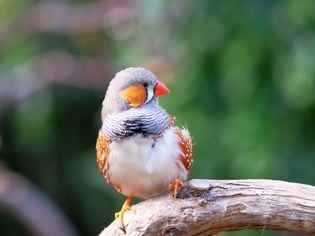
How to Breed Your Own Zebra Finches
Although many finch species are kept as pets, zebra finches are the most popular among bird owners....
Read More →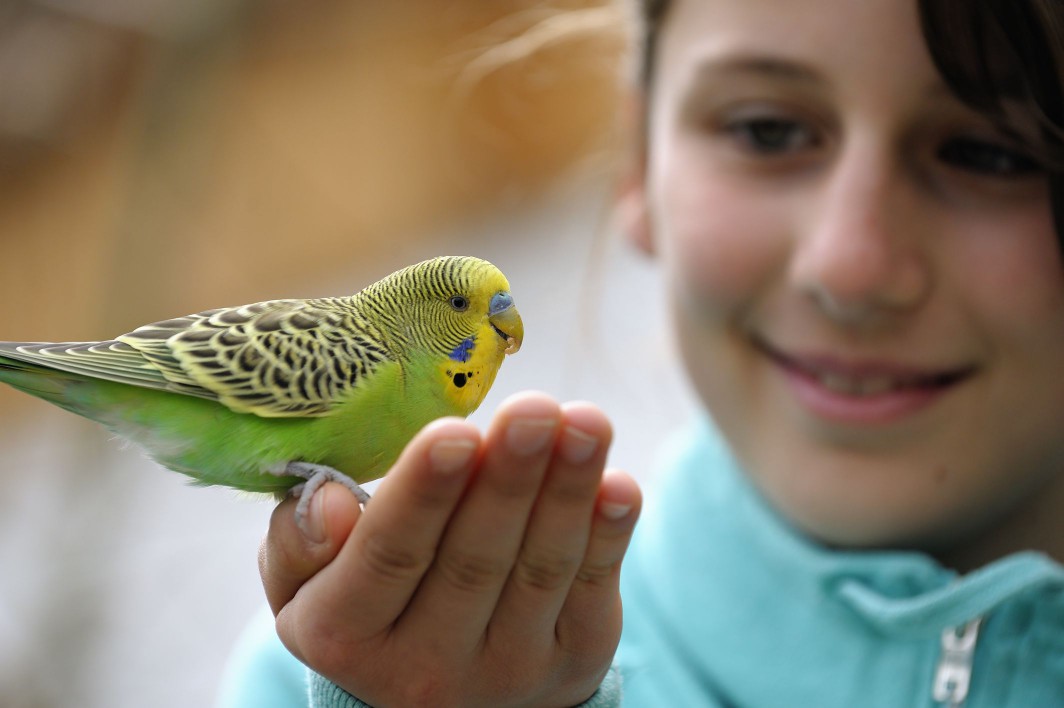
How to Care for a Pet Parakeet
The budgie, or parakeet, is among the smallest of the parrot species commonly kept as pets. They ar...
Read More →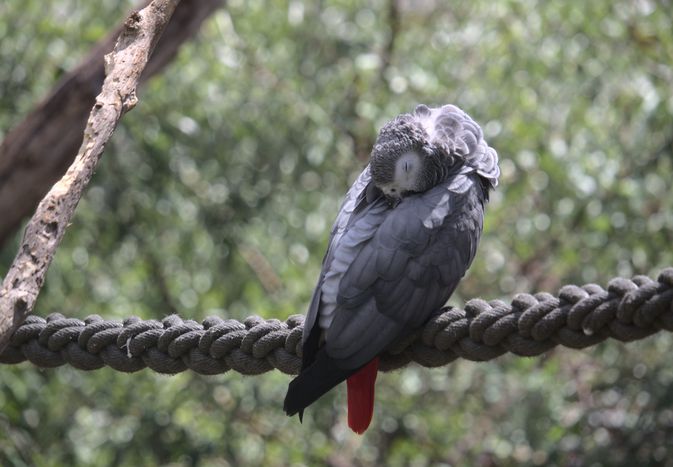
How Do Birds Sleep?
Most animals, including humans, natually lie down on their backs, sides, or even stomachs when they...
Read More →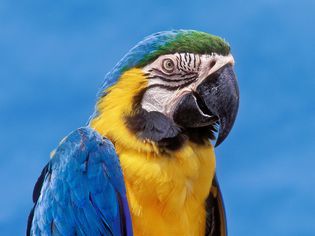
Blue and Gold Macaw: Bird Species Profile
Beautiful, captivating, intelligent, and majestic, blue and gold macaws are one of the most po...
Read More →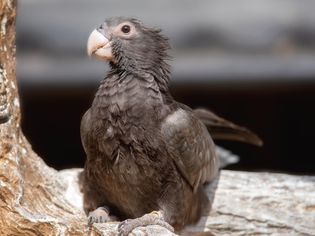
Vasa Parrot: Bird Species Profile
The Vasa Parrot is a medium-sized gray parrot that hails from Madagascar. The Vasa Parrot is about ...
Read More →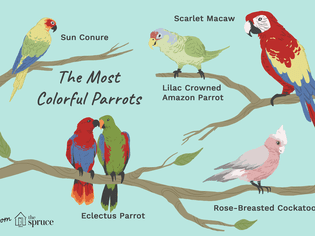
8 Top Colorful Parrot Species
For many people, the first thing that draws them to bird ownership is a parrot's colorful feath...
Read More →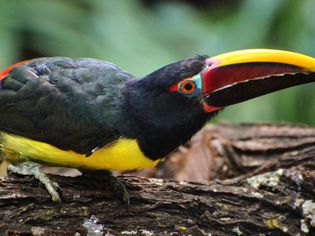
8 of the Most Exotic Pet Birds
Many people are familiar with the most common and popular types of pet birds, such as budgies, finc...
Read More →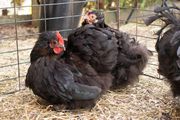
How to Care for a Pet Chicken
Some might view chickens as strictly farm animals. But it’s relatively common for homes in the su...
Read More →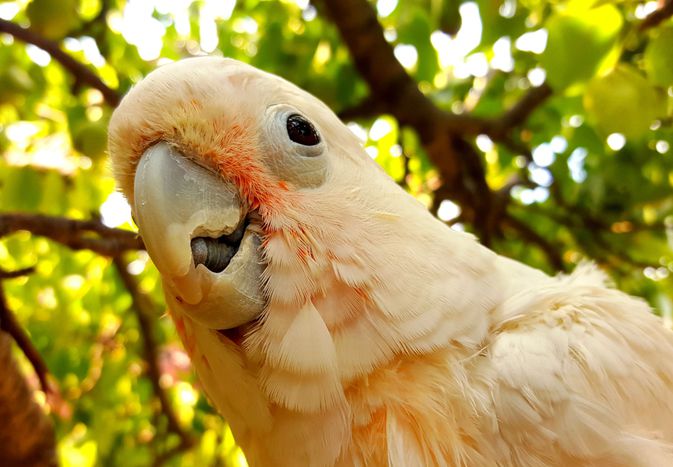
Top 10 Trainable Pet Birds
Birds are highly intelligent animals and some species are known to be particularly trainable. Many ...
Read More →
Comments on "Cherry-Headed (Red-Masked) Conure: Bird Species Profile" :